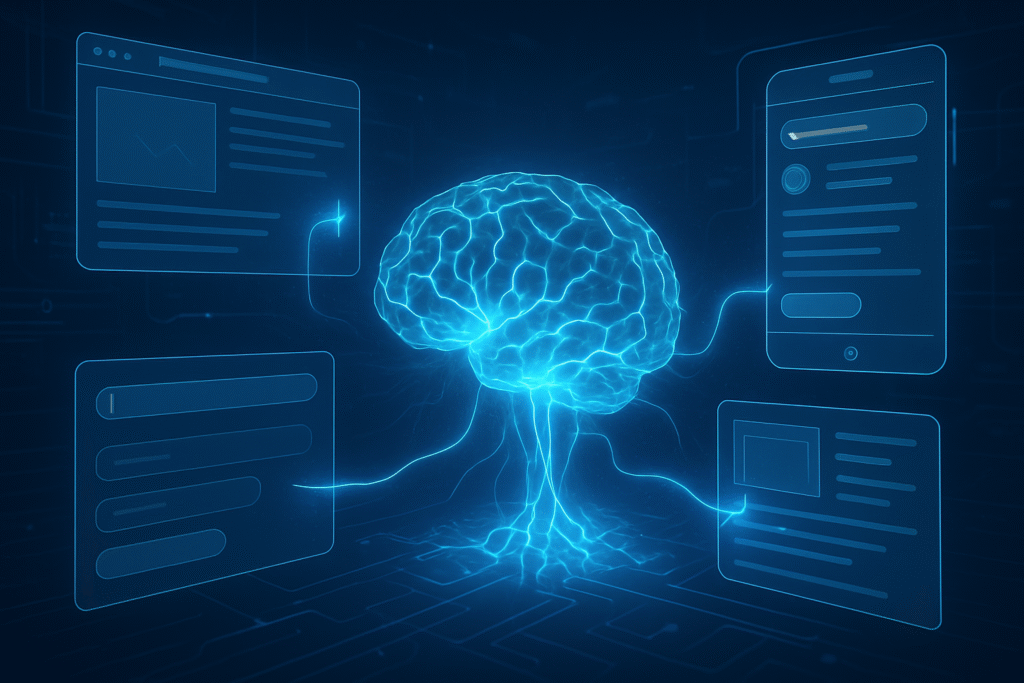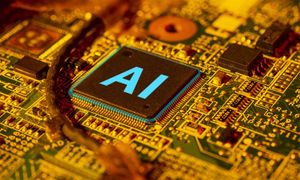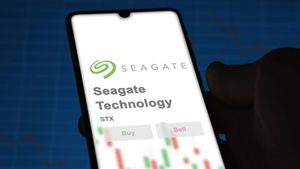
Mountain View, CA – October 7, 2025 – Google has today unveiled a groundbreaking advancement in artificial intelligence with the public preview of its Gemini 2.5 Computer Use model. This specialized iteration, built upon the formidable Gemini 2.5 Pro, marks a pivotal moment in AI development, empowering AI agents to interact with digital interfaces – particularly web and mobile environments – with unprecedented human-like dexterity and remarkably low latency. The announcement, made available through the Gemini API, Google AI Studio, and Vertex AI, and highlighted by Google and Alphabet CEO Sundar Pichai, signals a significant step toward developing truly general-purpose AI agents capable of navigating the digital world autonomously.
The immediate significance of the Gemini 2.5 Computer Use model cannot be overstated. By enabling AI to 'see' and 'act' within graphical user interfaces (GUIs), Google (NASDAQ: GOOGL) is addressing a critical bottleneck that has long limited AI's practical application in complex, dynamic digital environments. This breakthrough promises to unlock new frontiers in automation, productivity, and human-computer interaction, allowing AI to move beyond structured APIs and directly engage with the vast and varied landscape of web and mobile applications. Preliminary tests indicate latency reductions of up to 20% and a 15% lead in web interaction accuracy over rivals, setting a new benchmark for agentic AI.
Technical Prowess: Unpacking Gemini 2.5 Computer Use's Architecture
The Gemini 2.5 Computer Use model is a testament to Google DeepMind's relentless pursuit of advanced AI. It leverages the sophisticated visual understanding and reasoning capabilities inherent in its foundation, Gemini 2.5 Pro. Accessible via the computer_use tool in the Gemini API, this model operates within a continuous, iterative feedback loop, allowing AI agents to perform intricate tasks by directly engaging with UIs. Its core functionality involves processing multimodal inputs – user requests, real-time screenshots of the environment, and a history of recent actions – to generate precise UI actions such as clicking, typing, scrolling, or manipulating interactive elements.
Unlike many previous AI models that relied on structured APIs, the Gemini 2.5 Computer Use model distinguishes itself by directly interpreting and acting upon visual information presented in a GUI. This "seeing and acting" paradigm allows it to navigate behind login screens, fill out complex forms, and operate dropdown menus with a fluidity previously unattainable. The model's iterative loop ensures task completion: an action is generated, executed by client-side code, and then a new screenshot and URL are fed back to the model, allowing it to adapt and continue until the objective is met. This robust feedback mechanism, combined with its optimization for web browsers and strong potential for mobile UI control (though not yet desktop OS-level), sets it apart from earlier, more constrained automation solutions. Gemini 2.5 Pro's impressive 1 million token context window, with plans to expand to 2 million, also allows it to comprehend vast datasets and maintain coherence across lengthy interactions, a significant leap over models struggling with context limitations.
Initial reactions from the AI research community and industry experts have been overwhelmingly positive. The broader Gemini 2.5 family, which underpins the Computer Use model, has been lauded as a "methodical powerhouse," excelling in summarization, research, and creative tasks. Experts particularly highlight its "Deep Research" feature, powered by Gemini 2.5 Pro, as exceptionally detailed, making competitors' research capabilities "look like a child's game." Its integrated reasoning architecture, enabling step-by-step problem-solving, has led some to suggest it could be "a new smartest AI," especially in complex coding and mathematical challenges. The model's prowess in code generation, transformation, and debugging, as evidenced by its leading position on the WebDev Arena leaderboard, further solidifies its technical standing.
Industry Tremors: Reshaping the AI Competitive Landscape
The introduction of the Gemini 2.5 Computer Use model is poised to send significant ripples across the AI industry, impacting tech giants, established AI labs, and nimble startups alike. Google (NASDAQ: GOOGL) itself stands as a primary beneficiary, further entrenching its position as a leading AI innovator. By deeply integrating Gemini 2.5 across its vast ecosystem – including Search, Android, YouTube, Workspace, and ChromeOS – Google enhances its offerings and reinforces Gemini as a foundational intelligence layer, driving substantial business growth and AI adoption. Over 2.3 billion document interactions in Google Workspace alone in the first half of 2025 underscore this deep integration.
For other major AI labs and tech companies, the launch intensifies the ongoing "AI arms race." Competitors like OpenAI, Anthropic, and Microsoft (NASDAQ: MSFT) are already pushing boundaries in multimodal and agentic AI. Gemini 2.5 Computer Use directly challenges their offerings, particularly those focused on automated web interaction. While Anthropic's Claude Sonnet 4.5 also claims benchmark leadership in computer operation, Google's strategic advantage lies in its deep ecosystem integration, creating a "lock-in" effect that is difficult for pure-play AI providers to match. The model's availability via Google AI Studio and Vertex AI democratizes access to sophisticated AI, benefiting startups with lean teams by enabling rapid development of innovative solutions in areas like code auditing, customer insights, and application testing. However, startups building "thin wrapper" applications over generic LLM functionalities may struggle to differentiate and could be superseded by features integrated directly into core platforms.
The potential for disruption to existing products and services is substantial. Traditional Robotic Process Automation (RPA) tools, which often rely on rigid, rule-based scripting, face significant competition from AI agents that can autonomously navigate dynamic UIs. Customer service and support solutions could be transformed by Gemini Live's real-time multimodal interaction capabilities, offering AI-powered product support and guided shopping. Furthermore, Gemini's advanced coding features will disrupt software development processes by automating tasks, while its generative media tools could revolutionize content creation workflows. Any product or service relying on repetitive digital tasks or structured automation is vulnerable to disruption, necessitating adaptation or a fundamental rethinking of their value proposition.
Wider Significance: A Leap Towards General AI and its Complexities
The Gemini 2.5 Computer Use model represents more than just a technical upgrade; it's a significant milestone that reshapes the broader AI landscape and trends. It solidifies the mainstreaming of multimodal AI, where models seamlessly process text, audio, images, and video, moving beyond single data types for more human-like understanding. This aligns with projections that 60% of enterprise applications will use multimodal AI by 2026. Furthermore, its advanced reasoning capabilities and exceptionally long context window (up to 1 million tokens for Gemini 2.5 Pro) are central to the burgeoning trend of "agentic AI" – autonomous systems capable of observing, reasoning, planning, and executing tasks with minimal human intervention.
The impacts of such advanced agentic AI on society and the tech industry are profound. Economically, AI, including Gemini 2.5, is projected to add trillions to the global economy by 2030, boosting productivity by automating complex workflows and enhancing decision-making. While it promises to transform job markets, creating new opportunities, it also necessitates proactive retraining programs to address potential job displacement. Societally, it enables enhanced services and personalization in healthcare, finance, and education, and can contribute to addressing global challenges like climate change. Within the tech industry, it redefines software development by automating code generation and review, intensifies competition, and drives demand for specialized hardware and infrastructure.
However, the power of Gemini 2.5 also brings forth significant concerns. As AI systems become more autonomous and capable of direct UI interaction, challenges around bias, fairness, transparency, and accountability become even more pressing. The "black box" problem of complex AI algorithms, coupled with the potential for misuse (e.g., generating misinformation or engaging in deceptive behaviors), requires robust ethical frameworks and safety measures. The immense computational resources required also raise environmental concerns regarding energy consumption. Historically, AI milestones like AlphaGo (2016) demonstrated strategic reasoning, and BERT (2018) revolutionized language understanding. ChatGPT (2022) and GPT-4 (2023) popularized generative AI and introduced vision. Gemini 2.5, with its native multimodality, advanced reasoning, and unprecedented context window, builds upon these, pushing AI closer to truly general, versatile, and context-aware systems that can interact with the digital world as fluently as humans.
Glimpsing the Horizon: Future Developments and Expert Predictions
The trajectory of the Gemini 2.5 Computer Use model and agentic AI points towards a future where intelligent systems become even more autonomous, personalized, and deeply integrated into our daily lives and work. In the near term, we can expect continued expansion of Gemini 2.5 Pro's context window to 2 million tokens, further enhancing its ability to process vast information. Experimental features like "Deep Think" mode, enabling more intensive reasoning for highly complex tasks, are expected to become standard, leading to models like Gemini 3.0. Further optimizations for cost and latency, as seen with Gemini 2.5 Flash-Lite, will make these powerful capabilities more accessible for high-throughput applications. Enhancements in multimodal capabilities, including seamless blending of images and native audio output, will lead to more natural and expressive human-AI interactions.
Long-term applications for agentic AI, powered by models like Gemini 2.5 Computer Use, are truly transformative. Experts predict autonomous agents will manage and optimize most business processes, leading to fully autonomous enterprise management. In customer service, agentic AI is expected to autonomously resolve 80% of common issues by 2029. Across IT, HR, finance, cybersecurity, and healthcare, agents will streamline operations, automate routine tasks, and provide personalized assistance. The convergence of agentic AI with robotics will lead to more capable physical agents, while collaborative multi-agent systems will work synergistically with humans and other agents to solve highly complex problems. The vision is for AI to shift from being merely a tool to an active "co-worker," capable of proactive, multi-step workflow execution.
However, realizing this future requires addressing significant challenges. Technical hurdles include ensuring the reliability and predictability of autonomous agents, enhancing reasoning and explainability (XAI) to foster trust, and managing the immense computational resources and data quality demands. Ethical and societal challenges are equally critical: mitigating bias, ensuring data privacy and security, establishing clear accountability, preventing goal misalignment and unintended consequences, and navigating the profound impact on the workforce. Experts predict that the market value of agentic AI will skyrocket from $5.1 billion in 2025 to $47 billion by 2030, with 33% of enterprise software applications integrating agentic AI by 2028. The shift will be towards smaller, hyper-personalized AI models, and a focus on "reasoning-first design, efficiency, and accessibility" to make AI smarter, cheaper, and more widely available.
A New Era of Digital Autonomy: The Road Ahead
The Gemini 2.5 Computer Use model represents a profound leap in AI's journey towards true digital autonomy. Its ability to directly interact with graphical user interfaces is a key takeaway, fundamentally bridging the historical gap between AI's programmatic nature and the human-centric design of digital environments. This development is not merely an incremental update but a foundational piece for the next generation of AI agents, poised to redefine automation and human-computer interaction. It solidifies Google's position at the forefront of AI innovation and sets a new benchmark for what intelligent agents can accomplish in the digital realm.
In the grand tapestry of AI history, this model stands as a pivotal moment, akin to early breakthroughs in computer vision or natural language processing, but with the added dimension of active digital manipulation. Its long-term impact will likely manifest in ubiquitous AI assistants that can genuinely "do" things on our behalf, revolutionized workflow automation across industries, enhanced accessibility for digital interfaces, and an evolution in how software itself is developed. The core idea of an AI that can perceive and act upon arbitrary digital interfaces is a crucial step towards Artificial General Intelligence.
In the coming weeks and months, the tech world will keenly watch developer adoption and the innovative applications that emerge from the Gemini API. Real-world performance across the internet's diverse landscape will be crucial, as will progress towards expanding control to desktop operating systems. The effectiveness of Google's integrated safety and control mechanisms will be under intense scrutiny, particularly as agents become more capable. Furthermore, the competitive landscape will undoubtedly heat up, with rival AI labs striving for feature parity or superiority in agentic capabilities. How the Computer Use model integrates with the broader Gemini ecosystem, leveraging its long context windows and multimodal understanding, will ultimately determine its transformative power. The Gemini 2.5 Computer Use model is not just a tool; it's a harbinger of a new era where AI agents become truly active participants in our digital lives.
This content is intended for informational purposes only and represents analysis of current AI developments.
TokenRing AI delivers enterprise-grade solutions for multi-agent AI workflow orchestration, AI-powered development tools, and seamless remote collaboration platforms. For more information, visit https://www.tokenring.ai/.


















